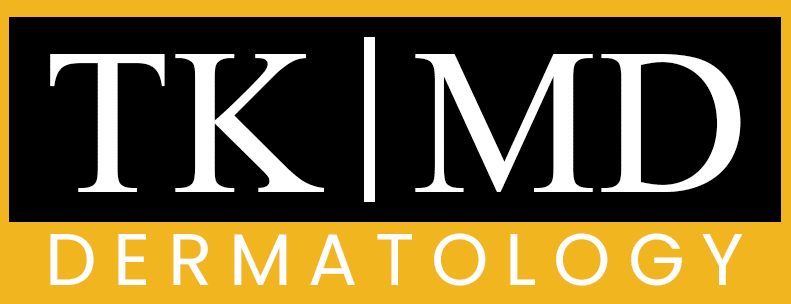Shingles, also known as herpes zoster, is a viral infection that manifests as a painful rash, typically appearing on one side of the body. It is caused by the reactivation of the varicella-zoster virus, which is the same virus responsible for chickenpox. Once we have had chickenpox, the virus remains dormant in our nervous system and can reactivate later in life, particularly when our immune system is weakened.
Understanding shingles is crucial, not only for those who have experienced it but also for those looking to prevent its occurrence. One of the key aspects of managing shingles involves dietary considerations, as certain foods can exacerbate symptoms or hinder recovery. When we think about managing shingles, we often focus on medications and topical treatments.
However, our diet plays a significant role in how our body responds to the virus. Certain foods can either support our immune system or contribute to inflammation and discomfort. By being mindful of what we consume, we can potentially alleviate some of the symptoms associated with shingles and promote a quicker recovery.
In this article, we will explore various food categories that we should consider avoiding or limiting to help manage shingles effectively.
Key Takeaways
- Shingles is a viral infection that can be managed with dietary considerations.
- Foods high in arginine, such as nuts and seeds, should be avoided as they can exacerbate shingles symptoms.
- Processed and sugary foods should be limited as they can weaken the immune system and prolong shingles recovery.
- Spicy foods can trigger shingles pain and should be avoided during an outbreak.
- Alcohol, caffeine, and acidic foods should be limited as they can aggravate shingles symptoms and delay healing.
Foods High in Arginine to Avoid
One of the primary dietary considerations for those dealing with shingles is the intake of foods high in arginine. Arginine is an amino acid that can promote the replication of the herpes virus, which is particularly concerning for individuals suffering from shingles. Foods such as nuts, seeds, chocolate, and certain grains are rich in arginine and may inadvertently fuel the virus’s activity in our bodies.
By avoiding these foods, we can help reduce the likelihood of exacerbating our symptoms. In addition to nuts and seeds, we should also be cautious with certain legumes and whole grains that contain high levels of arginine. While these foods are generally considered healthy and nutritious, their potential impact on shingles cannot be overlooked.
Instead of reaching for a handful of almonds or a slice of whole-grain bread, we might consider alternatives that are lower in arginine content. By making these conscious choices, we can create a dietary environment that is less conducive to the virus’s activity.
Processed and Sugary Foods to Limit

Processed and sugary foods are another category that we should be wary of when managing shingles. These foods often contain high levels of refined sugars and unhealthy fats, which can lead to increased inflammation in our bodies. Inflammation can exacerbate the pain and discomfort associated with shingles, making it essential for us to limit our intake of these items.
Foods like sugary snacks, sodas, and processed meats can not only weaken our immune response but also contribute to a prolonged recovery period. Moreover, consuming excessive amounts of sugar can lead to fluctuations in our blood sugar levels, which may further compromise our immune system. When we indulge in processed foods laden with sugar, we may find ourselves feeling sluggish and more susceptible to infections.
By opting for whole foods that are rich in vitamins and minerals instead, we can support our body’s natural defenses against the shingles virus. Fresh fruits, vegetables, and whole grains should take precedence over sugary treats as we navigate our dietary choices during this challenging time.
Spicy Foods to Avoid
Spicy foods can be another trigger for those suffering from shingles. While many of us enjoy the heat and flavor that spices bring to our meals, they can also irritate the skin and exacerbate pain associated with the rash. Capsaicin, the compound found in chili peppers that gives them their heat, may lead to increased sensitivity in already inflamed areas of our skin.
As a result, it may be wise for us to avoid spicy dishes while dealing with shingles. In addition to causing discomfort, spicy foods can also lead to digestive issues for some individuals. When our bodies are already under stress from fighting off a viral infection, adding further strain through spicy meals may not be beneficial.
Instead, we might consider milder alternatives that still provide flavor without the added irritation. Herbs and non-spicy seasonings can enhance our meals while keeping our symptoms at bay.
Foods High in L-arginine to Avoid
Similar to arginine-rich foods, those high in L-arginine should also be limited during a shingles outbreak. L-arginine is another form of arginine that can promote viral replication. Foods such as red meat, poultry, and certain dairy products are known to contain higher levels of L-arginine.
While these foods are often staples in many diets due to their protein content, we should be cautious about their consumption when dealing with shingles. Instead of relying on high-L-arginine foods for protein intake, we might explore alternatives such as fish or plant-based proteins that are lower in this amino acid. Incorporating legumes like lentils or chickpeas can provide us with necessary nutrients without exacerbating our condition.
By being mindful of our protein sources, we can maintain a balanced diet while minimizing the risk of aggravating our shingles symptoms.
Alcohol and Caffeine to Limit

Here is the rewritten text with 3-4 Limiting Dehydrating Substances
—————————
### Avoiding Dehydration
Alcohol and caffeine are two substances that we should consider limiting during a shingles outbreak. Both can have dehydrating effects on our bodies and may interfere with our immune response. Alcohol consumption can weaken our immune system’s ability to fight off infections, making it more challenging for us to recover from shingles.
### Disrupted Sleep Patterns
Additionally, caffeine can lead to increased anxiety and restlessness, which may exacerbate discomfort during this time. When we consume alcohol or caffeinated beverages, we may also find ourselves experiencing disrupted sleep patterns. Quality rest is crucial for recovery from any illness, including shingles.
### Prioritizing Hydration for Recovery
By prioritizing hydration through water and herbal teas instead of alcohol or caffeinated drinks, we can support our body’s healing process more effectively. This simple adjustment can make a significant difference in how we feel during our recovery journey.
Acidic Foods and Beverages to Avoid
Acidic foods and beverages can also pose challenges for those dealing with shingles. Items such as citrus fruits, tomatoes, and vinegar-based dressings may irritate sensitive skin or exacerbate pain associated with the rash. While these foods are often praised for their health benefits, their acidity can lead to discomfort when consumed during a shingles outbreak.
Instead of reaching for acidic options, we might consider milder alternatives that provide similar nutritional benefits without the potential irritation. For instance, opting for sweet fruits like bananas or melons can satisfy our cravings while being gentler on our systems. By making these thoughtful choices, we can create a more comfortable eating experience as we navigate through shingles.
Foods that Weaken the Immune System to Avoid
Certain foods have been shown to weaken the immune system and should be avoided when managing shingles. Processed meats, fried foods, and trans fats are known culprits that can lead to inflammation and compromise our body’s defenses against infections. When we consume these types of foods regularly, we may find ourselves more susceptible to illnesses like shingles.
In addition to avoiding processed options, we should also be cautious about excessive salt intake.
High sodium levels can lead to dehydration and negatively impact our overall health.
Instead of reaching for salty snacks or processed meals, we might focus on whole foods rich in antioxidants and vitamins that support immune function.
Fresh fruits and vegetables should take center stage in our diets as they provide essential nutrients that help bolster our defenses against viral infections.
High-Fat Foods to Limit
High-fat foods are another category that warrants attention when managing shingles. While healthy fats are essential for overall health, excessive consumption of saturated fats found in fried foods and fatty cuts of meat can lead to increased inflammation in the body. This inflammation can exacerbate symptoms associated with shingles and hinder recovery efforts.
Instead of indulging in high-fat options, we might consider incorporating healthier fats into our diets through sources like avocados, nuts (in moderation), and olive oil. These healthier alternatives provide essential fatty acids without contributing to inflammation. By making these dietary adjustments, we can create an environment that supports healing while still enjoying flavorful meals.
Foods that Can Cause Allergic Reactions to Avoid
For some individuals dealing with shingles, certain foods may trigger allergic reactions that complicate their condition further. Common allergens such as dairy products, gluten-containing grains, and shellfish can lead to inflammation or discomfort in sensitive individuals. If we know that we have food allergies or intolerances, it is crucial for us to avoid these items during a shingles outbreak.
By steering clear of potential allergens, we can minimize additional stress on our bodies as they work to combat the virus responsible for shingles. Instead of relying on common allergens for nutrition, we might explore alternative sources that provide similar benefits without the risk of adverse reactions. This approach not only supports our recovery but also promotes overall well-being.
Conclusion and Recommended Diet for Shingles
In conclusion, managing shingles effectively requires careful consideration of our dietary choices. By avoiding foods high in arginine and L-arginine, limiting processed and sugary items, steering clear of spicy and acidic options, and being mindful of alcohol and caffeine intake, we can create an environment conducive to healing. Additionally, focusing on whole foods rich in vitamins and minerals will support our immune system during this challenging time.
As we navigate through this experience together, let us prioritize nourishing our bodies with wholesome ingredients that promote recovery rather than hinder it. By making informed dietary choices and being mindful of what we consume, we can take proactive steps toward alleviating symptoms associated with shingles while supporting our overall health and well-being.
If you are looking for more information on skin health and dermatology, you may be interested in reading about how to protect your skin with Molesafe. This article discusses the importance of monitoring moles and other skin irregularities for signs of skin cancer. To learn more about this topic, visit here.
FAQs
What is shingles?
Shingles is a viral infection that causes a painful rash. It is caused by the varicella-zoster virus, the same virus that causes chickenpox.
What are the symptoms of shingles?
The symptoms of shingles include a painful, blistering rash, itching, tingling, and burning sensations, fever, headache, and fatigue.
What should I avoid eating if I have shingles?
If you have shingles, it is recommended to avoid foods that are high in arginine, such as nuts, seeds, chocolate, and whole grains. These foods can potentially exacerbate the symptoms of shingles.
Why should I avoid foods high in arginine if I have shingles?
Arginine is an amino acid that can potentially trigger the replication of the varicella-zoster virus, leading to more severe symptoms of shingles. Therefore, it is best to avoid foods high in arginine to help manage the symptoms of shingles.
Are there any other foods or drinks to avoid if I have shingles?
It is also recommended to limit the consumption of alcohol and caffeine, as these substances can weaken the immune system and prolong the healing process of shingles. Additionally, spicy and acidic foods may irritate the rash and should be avoided.


